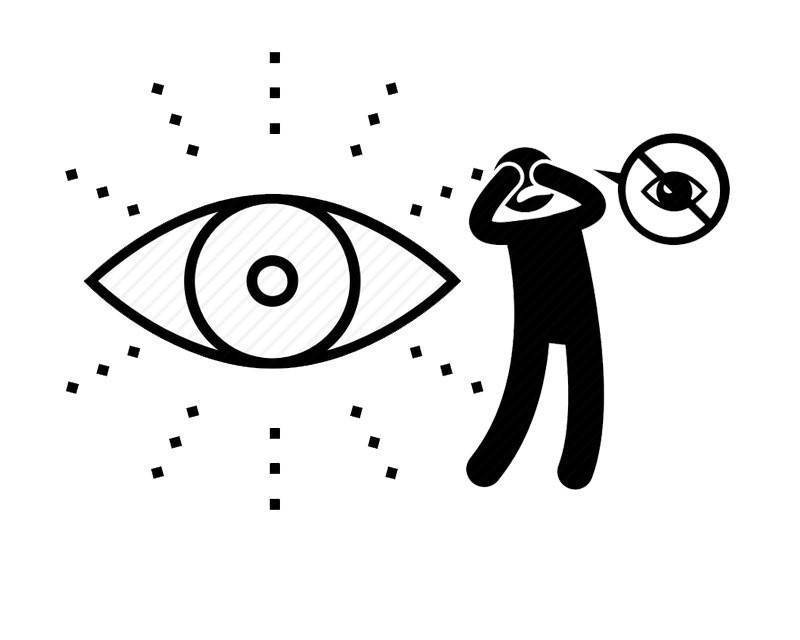I don’t know if anyone has experienced this.
Long-term eye fatigue, blinking suddenly, some dark shadows appear in front of the eyes, and changes occur with the movement of the eyeballs, especially in the environment with strong light.
If there are no other problems with the eyes themselves, the simple phenomenon of floaters does not need to be dealt with.
However, if there is eye pain, redness, etc., then you need to be vigilant, it may be pathological floaters.

Floaters have nothing to do with mosquitoes
The so-called floaters is mainly a phenomenon caused by degeneration of the vitreous body, which is divided into two types: physiological and pathological. Once sick, the patient’s vision will be affected to a certain extent.
Generally speaking, physiological floaters usually have a slow process, mainly due to the liquefaction and detachment of the vitreous, which is the most common cause of floaters.
Pathological floaters are often sudden, mainly caused by retinal hemorrhage, inflammation, parasites or retinal tears, detachment .
When blood, tissue exudates and inflammatory cells float in front of your eyes, black spots like mosquitoes will appear.
Hence the name “floaters”.

What are the symptoms of floaters?
1. Flying black spots in front of the eyes
Whether it is a physiological floater or a pathological floater , There are always some black spots floating in front of the patient’s eyes, and these black spots will float with the rotation of the eyeball.
Especially in a brighter environment, this phenomenon will be very obvious. If it is physiological floaters, the patient’s vision will not be affected.
The number of these black spots increases with age. If it is pathological floaters, there will be many black spots in front of the patient’s eyes, and in a short period of time, the number of black spots will continue to increase.

2. Decreased vision
If yes With physiological floaters, the patient’s vision does not decline rapidly, but if it is pathological floaters, the patient’s vision declines very quickly.
For example, the patient’s vision may be lost, or the patient’s vision may be blocked by a black screen.
If there is blood in the vitreous, some red fluttering smoke will appear in front of the patient’s eyes. It is also accompanied by symptoms of photophobia, tearing, and eye pain.

What causes floaters?
I. Long-term ocular inflammation
For people who have suffered from some intraocular inflammation for a long time, the risk of The probability of mosquito disease will be particularly high, such as retinal or uveal inflammation, which will affect the vitreous.
And due to the stimulation of inflammation, some exudates will appear in adjacent tissues, and these exudates will also enter the vitreous body, resulting in vitreous opacity and inducing the appearance of floaters.
Second, high blood pressure or diabetes
For people with high blood pressure and diabetes, if the blood pressure and blood sugar values are not well controlled , or abnormal fluctuations in blood sugar and blood pressure values, it is easy to cause retinopathy.
Once retinopathy occurs, it is very likely to cause abnormal retinal hemorrhage. The blood will be mixed into the vitreous, which will induce the appearance of floaters.
Three, long-term overuse of eyes
For people who overuse eyes for a long time, the probability of suffering from floaters is also particularly high.
Due to the long-term overuse of the eyes, it will cause abnormal bleeding of blood vessels in the eyes, and some local inflammations are prone to occur. As a result, the vitreous body is liquefied, degenerated and clouded, which will cause the appearance of floaters.
In addition, people with eye trauma are more likely to develop floaters.

Pathological floaters need timely treatment
Generally speaking, most of the pathological floaters are relatively serious, and there are often obvious obstructions or flashes when looking at things, which has a great impact on vision.
If not treated in time, the condition will gradually deteriorate, leading to vision loss, which may lead to blindness.
The treatment for pathological floaters usually requires treatment for the primary disease.
If severe retinal hemorrhages, or if there is no effect within 2-3 weeks, vitreous surgery is required.
In the case of uveitis, treatment with hormonal drugs, mydriatics may be required with the help of a doctor.
If chronic diseases such as diabetes, hypertension cause bleeding lesions, then active >Control blood sugar, blood pressure.
If retinal tear is obvious, retinal laser sealing of the tear is required, if ineffective laser , or a retinal rupture requiring surgery.
References:
[1] Liu Jiaqi, Li Fengming. Practical Ophthalmology [M]. Beijing: People’s Health Publishing House, 2014.
[2] Li Yang, Li Qiuming. Research progress and treatment status of floaters[J]. International Survey of Ophthalmology, 2016, 40 (3):182-186.